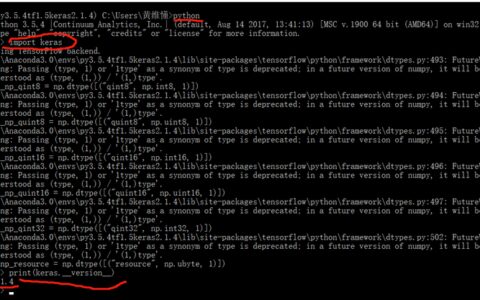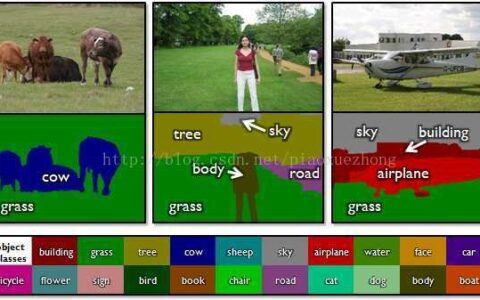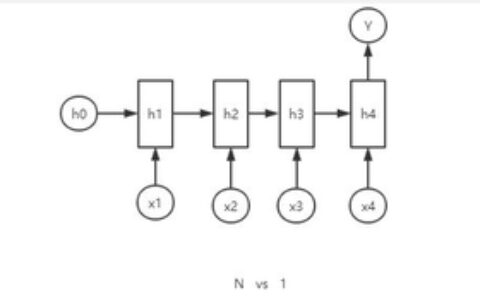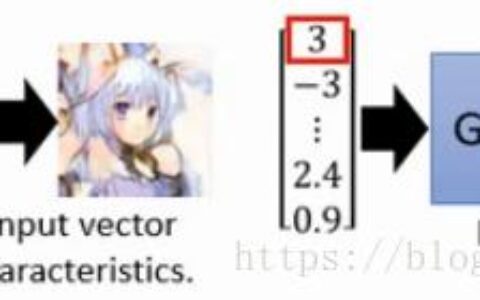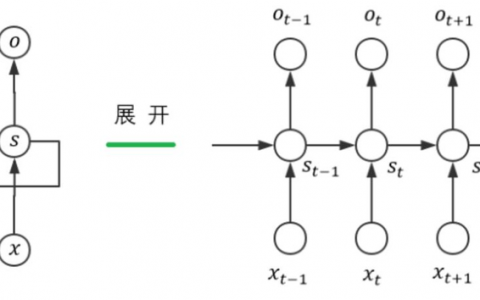https://stackoverflow.com/questions/38714959/understanding-keras-lstms/50235563
https://stackoverflow.com/questions/43034960/many-to-one-and-many-to-many-lstm-examples-in-keras
Understanding Keras LSTMs
I am trying to reconcile my understand of LSTMs and pointed out here in this post by Christopher Olah implemented in Keras. I am following the blog written by Jason Brownlee for the Keras tutorial. What I am mainly confused about is,
- The reshaping of the data series into
[samples, time steps, features]and, - The stateful LSTMs
Lets concentrate on the above two questions with reference to the code pasted below:
# reshape into X=t and Y=t+1
look_back = 3
trainX, trainY = create_dataset(train, look_back)
testX, testY = create_dataset(test, look_back)
# reshape input to be [samples, time steps, features]
trainX = numpy.reshape(trainX, (trainX.shape[0], look_back, 1))
testX = numpy.reshape(testX, (testX.shape[0], look_back, 1))
########################
# The IMPORTANT BIT
##########################
# create and fit the LSTM network
batch_size = 1
model = Sequential()
model.add(LSTM(4, batch_input_shape=(batch_size, look_back, 1), stateful=True))
model.add(Dense(1))
model.compile(loss='mean_squared_error', optimizer='adam')
for i in range(100):
model.fit(trainX, trainY, nb_epoch=1, batch_size=batch_size, verbose=2, shuffle=False)
model.reset_states()Note: create_dataset takes a sequence of length N and returns a N-look_back array of which each element is a look_back length sequence.
What is Time Steps and Features?
As can be seen TrainX is a 3-D array with Time_steps and Feature being the last two dimensions respectively (3 and 1 in this particular code). With respect to the image below, does this mean that we are considering the many to one case, where the number of pink boxes are 3? Or does it literally mean the chain length is 3 (i.e. only 3 green boxes considered). 
Does the features argument become relevant when we consider multivariate series? e.g. modelling two financial stocks simultaneously?
Stateful LSTMs
Does stateful LSTMs mean that we save the cell memory values between runs of batches? If this is the case, batch_size is one, and the memory is reset between the training runs so what was the point of saying that it was stateful. I'm guessing this is related to the fact that training data is not shuffled, but I'm not sure how.
Any thoughts? Image reference: http://karpathy.github.io/2015/05/21/rnn-effectiveness/
Edit 1:
A bit confused about @van's comment about the red and green boxes being equal. So just to confirm, does the following API calls correspond to the unrolled diagrams? Especially noting the second diagram (batch_size was arbitrarily chosen.): 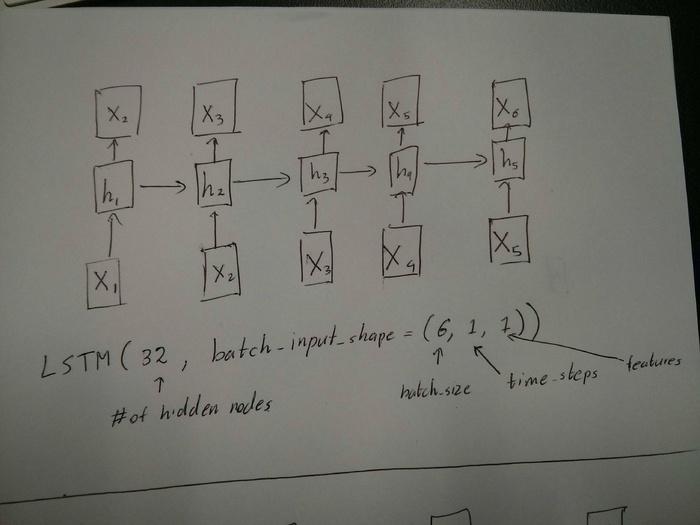
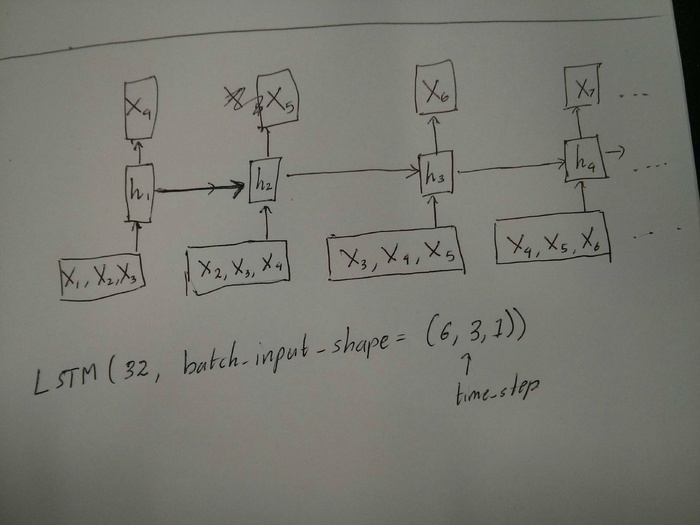
Edit 2:
For people who have done Udacity's deep learning course and still confused about the time_step argument, look at the following discussion: https://discussions.udacity.com/t/rnn-lstm-use-implementation/163169
Update:
It turns out model.add(TimeDistributed(Dense(vocab_len))) was what I was looking for. Here is an example: https://github.com/sachinruk/ShakespeareBot
Update2:
I have summarised most of my understanding of LSTMs here: https://www.youtube.com/watch?v=ywinX5wgdEU
-
6The first photo should be (batch_size, 5, 1); the second photo should be (batch_size, 4, 3) (if there is no following sequences). And why the output is still "X"? Should it be "Y"? – Van Aug 4 '16 at 6:28
-
1Here I assume X_1, X_2 ... X_6 is a single number. And three number (X_1, X_2, X_3) makes a vector of shape (3,). One number (X_1) makes a vector of shape (1,). – Van Aug 4 '16 at 6:31
-
2@Van,your assumption is correct. That's interesting, so basically the model doesn't learn patterns beyond the number of time_steps. So if I have a time series the length of 1000, and can visually see a pattern every 100 days, I should make the time_steps parameter atleast 100. Is this a correct observation? – sachinruk Aug 4 '16 at 6:33
-
3Yes. And if you can collect 3 relevant features per day, then you can set feature size to 3 as you did in the second photo. Under that circumstance, the input shape will be (batch_size, 100, 3). – Van Aug 4 '16 at 6:41
-
1and to anser your first question it was because I was taking a single time series. For example stock prices, so X and Y are from the same series. – sachinruk Aug 4 '16 at 6:47
First of all, you choose great tutorials(1,2) to start.
What Time-step means: Time-steps==3 in X.shape (Describing data shape) means there are three pink boxes. Since in Keras each step requires an input, therefore the number of the green boxes should usually equal to the number of red boxes. Unless you hack the structure.
many to many vs. many to one: In keras, there is a return_sequences parameter when your initializing LSTM or GRU or SimpleRNN. When return_sequences is False (by default), then it is many to one as shown in the picture. Its return shape is (batch_size, hidden_unit_length), which represent the last state. When return_sequences is True, then it is many to many. Its return shape is (batch_size, time_step, hidden_unit_length)
Does the features argument become relevant: Feature argument means "How big is your red box" or what is the input dimension each step. If you want to predict from, say, 8 kinds of market information, then you can generate your data with feature==8.
Stateful: You can look up the source code. When initializing the state, if stateful==True, then the state from last training will be used as the initial state, otherwise it will generate a new state. I haven't turn on stateful yet. However, I disagree with that the batch_size can only be 1 when stateful==True.
Currently, you generate your data with collected data. Image your stock information is coming as stream, rather than waiting for a day to collect all sequential, you would like to generate input data online while training/predicting with network. If you have 400 stocks sharing a same network, then you can set batch_size==400.
-
Slightly confused about why the red and green boxes have to be the same. Could you look at the edit I've made (the new pictures mainly) and comment? – sachinruk Aug 4 '16 at 0:47
-
I believe if you set the time-step to be 1, it is not a recurrent neural network. It will reduce to the 'one-to-one' case in the left-most figure. Correct? – LKS Aug 19 '16 at 21:43
-
Well, it still is a recurrent network. Because the initial_state (h_0) can be inherited from previous update. By applying time-step=1 N times (keeping last hidden state as next initial state), you can actually acquire the same effect of time-step=N. This is very useful when your data is acquired via stream without any buffer. – VanAug 21 '16 at 10:25
-
1@Van If I have a multivariate time series, should I still use
lookback = 1? – i.n.n.m Jul 31 '17 at 19:37 -
1Addition to
stateful=True: The batch size can be anything you like, but you have to stick to it. If you build your model with a batch size of 5, then allfit(),predict()and related methods will require a batch of 5. Note however that this state will not be saved withmodel.save(), which might seem undesirable. However you can manually add the state to the hdf5 file, if you need it. But effectively this allows you to change the batch size by just saving and reloading a model. – jlh May 14 at 14:08
As a complement to the accepted answer, this answer shows keras behaviors and how to achieve each picture.
General Keras behavior
The standard keras internal processing is always a many to many as in the following picture (where I used features=2, pressure and temperature, just as an example):
In this image, I increased the number of steps to 5, to avoid confusion with the other dimensions.
For this example:
- We have N oil tanks
- We spent 5 hours taking measures hourly (time steps)
- We measured two features:
- Pressure P
- Temperature T
Our input array should then be something shaped as (N,5,2):
[ Step1 Step2 Step3 Step4 Step5
Tank A: [[Pa1,Ta1], [Pa2,Ta2], [Pa3,Ta3], [Pa4,Ta4], [Pa5,Ta5]],
Tank B: [[Pb1,Tb1], [Pb2,Tb2], [Pb3,Tb3], [Pb4,Tb4], [Pb5,Tb5]],
....
Tank N: [[Pn1,Tn1], [Pn2,Tn2], [Pn3,Tn3], [Pn4,Tn4], [Pn5,Tn5]],
]Inputs for sliding windows
Often, LSTM layers are supposed to process the entire sequences. Dividing windows may not be the best idea. The layer has internal states about how a sequence is evolving as it steps forward. Windows eliminate the possibility of learning long sequences, limiting all sequences to the window size.
In windows, each window is part of a long original sequence, but by Keras they will be seen each as an independent sequence:
[ Step1 Step2 Step3 Step4 Step5
Window A: [[P1,T1], [P2,T2], [P3,T3], [P4,T4], [P5,T5]],
Window B: [[P2,T2], [P3,T3], [P4,T4], [P5,T5], [P6,T6]],
Window C: [[P3,T3], [P4,T4], [P5,T5], [P6,T6], [P7,T7]],
....
]Notice that in this case, you have initially only one sequence, but you're dividing it in many sequences to create windows.
The concept of "what is a sequence" is abstract. The important parts are:
- you can have batches with many individual sequences
- what makes the sequences be sequences is that they evolve in steps (usually time steps)
Achieving each case with "single layers"
Achieving standard many to many:
You can achieve many to many with a simple LSTM layer, using return_sequences=True:
outputs = LSTM(units, return_sequences=True)(inputs)
#output_shape -> (batch_size, steps, units)Achieving many to one:
Using the exact same layer, keras will do the exact same internal preprocessing, but when you use return_sequences=False (or simply ignore this argument), keras will automatically discard the steps previous to the last:
outputs = LSTM(units)(inputs)
#output_shape -> (batch_size, units) --> steps were discarded, only the last was returnedAchieving one to many
Now, this is not supported by keras LSTM layers alone. You will have to create your own strategy to multiplicate the steps. There are two good approaches:
- Create a constant multi-step input by repeating a tensor
- Use a
stateful=Trueto recurrently take the output of one step and serve it as the input of the next step (needsoutput_features == input_features)
One to many with repeat vector
In order to fit to keras standard behavior, we need inputs in steps, so, we simply repeat the inputs for the length we want:
outputs = RepeatVector(steps)(inputs) #where inputs is (batch,features)
outputs = LSTM(units,return_sequences=True)(outputs)
#output_shape -> (batch_size, steps, units)Understanding stateful = True
Now comes one of the possible usages of stateful=True (besides avoiding loading data that can't fit your computer's memory at once)
Stateful allows us to input "parts" of the sequences in stages. The difference is:
- In
stateful=False, the second batch contains whole new sequences, independent from the first batch - In
stateful=True, the second batch continues the first batch, extending the same sequences.
It's like dividing the sequences in windows too, with these two main differences:
- these windows do not superpose!!
-
stateful=Truewill see these windows connected as a single long sequence
In stateful=True, every new batch will be interpreted as continuing the previous batch (until you call model.reset_states()).
- Sequence 1 in batch 2 will continue sequence 1 in batch 1.
- Sequence 2 in batch 2 will continue sequence 2 in batch 1.
- Sequence n in batch 2 will continue sequence n in batch 1.
Example of inputs, batch 1 contains steps 1 and 2, batch 2 contains steps 3 to 5:
BATCH 1 BATCH 2
[ Step1 Step2 | [ Step3 Step4 Step5
Tank A: [[Pa1,Ta1], [Pa2,Ta2], | [Pa3,Ta3], [Pa4,Ta4], [Pa5,Ta5]],
Tank B: [[Pb1,Tb1], [Pb2,Tb2], | [Pb3,Tb3], [Pb4,Tb4], [Pb5,Tb5]],
.... |
Tank N: [[Pn1,Tn1], [Pn2,Tn2], | [Pn3,Tn3], [Pn4,Tn4], [Pn5,Tn5]],
] ]Notice the alignment of tanks in batch 1 and batch 2! That's why we need shuffle=False (unless we are using only one sequence, of course).
You can have any number of batches, indefinitely. (For having variable lengths in each batch, use input_shape=(None,features).
One to many with stateful=True
For our case here, we are going to use only 1 step per batch, because we want to get one output step and make it be an input.
Please notice that the behavior in the picture is not "caused by" stateful=True. We will force that behavior in a manual loop below. In this example, stateful=True is what "allows" us to stop the sequence, manipulate what we want, and continue from where we stopped.
Honestly, the repeat approach is probably a better choice for this case. But since we're looking into stateful=True, this is a good example. The best way to use this is the next "many to many" case.
Layer:
outputs = LSTM(units=features,
stateful=True,
return_sequences=True, #just to keep a nice output shape even with length 1
input_shape=(None,features))(inputs)
#units = features because we want to use the outputs as inputs
#None because we want variable length
#output_shape -> (batch_size, steps, units) Now, we're going to need a manual loop for predictions:
input_data = someDataWithShape((batch, 1, features))
#important, we're starting new sequences, not continuing old ones:
model.reset_states()
output_sequence = []
last_step = input_data
for i in steps_to_predict:
new_step = model.predict(last_step)
output_sequence.append(new_step)
last_step = new_step
#end of the sequences
model.reset_states()Many to many with stateful=True
Now, here, we get a very nice application: given an input sequence, try to predict its future unknown steps.
We're using the same method as in the "one to many" above, with the difference that:
- we will use the sequence itself to be the target data, one step ahead
- we know part of the sequence (so we discard this part of the results).
Layer (same as above):
outputs = LSTM(units=features,
stateful=True,
return_sequences=True,
input_shape=(None,features))(inputs)
#units = features because we want to use the outputs as inputs
#None because we want variable length
#output_shape -> (batch_size, steps, units) Training:
We are going to train our model to predict the next step of the sequences:
totalSequences = someSequencesShaped((batch, steps, features))
#batch size is usually 1 in these cases (often you have only one Tank in the example)
X = totalSequences[:,:-1] #the entire known sequence, except the last step
Y = totalSequences[:,1:] #one step ahead of X
#loop for resetting states at the start/end of the sequences:
for epoch in range(epochs):
model.reset_states()
model.train_on_batch(X,Y)Predicting:
The first stage of our predicting involves "ajusting the states". That's why we're going to predict the entire sequence again, even if we already know this part of it:
model.reset_states() #starting a new sequence
predicted = model.predict(totalSequences)
firstNewStep = predicted[:,-1:] #the last step of the predictions is the first future stepNow we go to the loop as in the one to many case. But don't reset states here!. We want the model to know in which step of the sequence it is (and it knows it's at the first new step because of the prediction we just made above)
output_sequence = [firstNewStep]
last_step = firstNewStep
for i in steps_to_predict:
new_step = model.predict(last_step)
output_sequence.append(new_step)
last_step = new_step
#end of the sequences
model.reset_states()This approach was used in these answers and file:
- Predicting a multiple time step forward of a time series using LSTM
- how to use the Keras model to forecast for future dates or events?
- https://github.com/danmoller/TestRepo/blob/master/TestBookLSTM.ipynb
Achieving complex configurations
In all examples above, I showed the behavior of "one layer".
You can, of course, stack many layers on top of each other, not necessarly all following the same pattern, and create your own models.
One interesting example that has been appearing is the "autoencoder" that has a "many to one encoder" followed by a "one to many" decoder:
Encoder:
inputs = Input((steps,features))
#a few many to many layers:
outputs = LSTM(hidden1,return_sequences=True)(inputs)
outputs = LSTM(hidden2,return_sequences=True)(outputs)
#many to one layer:
outputs = LSTM(hidden3)(outputs)
encoder = Model(inputs,outputs)Decoder:
Using the "repeat" method;
inputs = Input((hidden3,))
#repeat to make one to many:
outputs = RepeatVector(steps)(inputs)
#a few many to many layers:
outputs = LSTM(hidden4,return_sequences=True)(outputs)
#last layer
outputs = LSTM(features,return_sequences=True)(outputs)
decoder = Model(inputs,outputs)Autoencoder:
inputs = Input((steps,features))
outputs = encoder(inputs)
outputs = decoder(outputs)
autoencoder = Model(inputs,outputs)Train with fit(X,X)
-
This is a great answer. I'm still missing 1 thing though. Say the LSTM is supposed to learn 2 sequences I:[1,2,3]->O:[4,5,6] and I:[1,2,0]->O:[0,0,0]. It's supposed to predict 3 steps, but in order to predict step 3, steps 1 and 2 must be predicted first. The problem is, the steps 1 and 2 have ambiguous results on their own. So what happens when the step 3 is fed into the network? The outputs of steps 1 and 2 get corrected? – Andrzej Gis Jun 3 at 22:14
-
This net will probably not learn well. There is no correction of the past. But you can always try to add more layers (including non recurrent) to analyse the steps and compensate the errors, then more recurrent layers. You can also create a network using
go_backwards=Trueor useBidirectional(LSTM(...))and stack more layers to analyse compensate the errors. But honestly, I have no idea how to make a "step-by-step" solution for undefined length bidirectional nets. – Daniel Möller Jun 3 at 23:24 -
Hmm.. this feels weird. Does it mean that sequences cannot have the same beginnings in order to be properly recognized? I believe this happens all the time. Especially in binary sequences. – Andrzej Gis Jun 4 at 0:12
-
With 1 layer and 1 direction? That feels very natural to me. Would you recognize the sequences from the first steps? – Daniel Möller Jun 4 at 2:35
-
1Cells and length are completely independent values. None of the pictures represent the number of "cells". They're all for "length". – Daniel Möller Aug 17 at 11:43keras seq2seqhttps://blog.keras.io/a-ten-minute-introduction-to-sequence-to-sequence-learning-in-keras.htmlhttps://machinelearningmastery.com/define-encoder-decoder-sequence-sequence-model-neural-machine-translation-keras/https://www.jianshu.com/p/c294e4cb4070
本站文章如无特殊说明,均为本站原创,如若转载,请注明出处:理解keras 的 LSTM - Python技术站




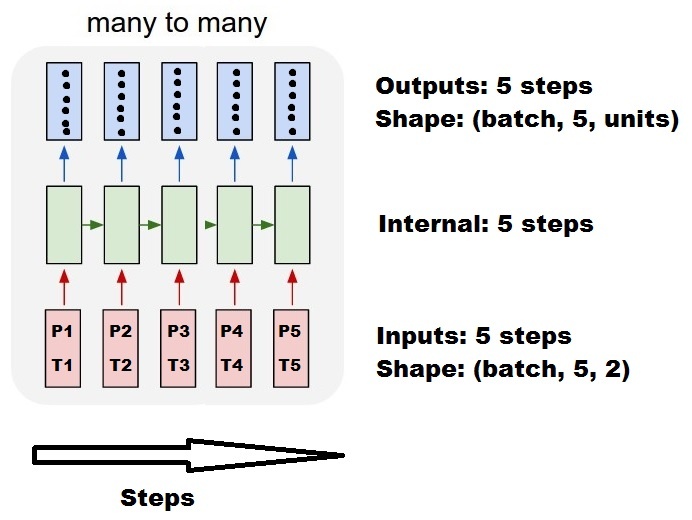
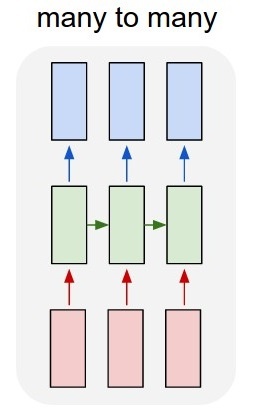
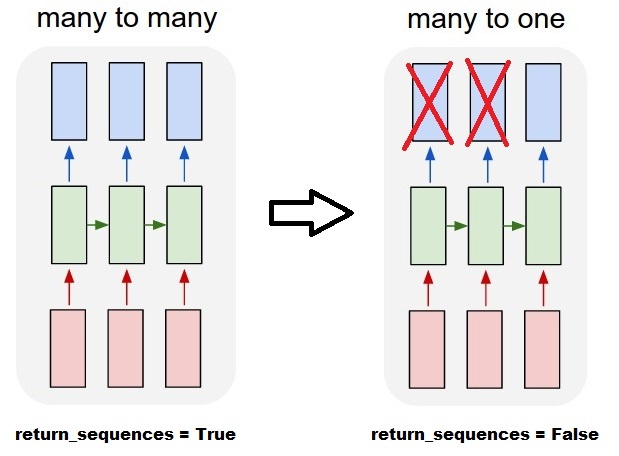
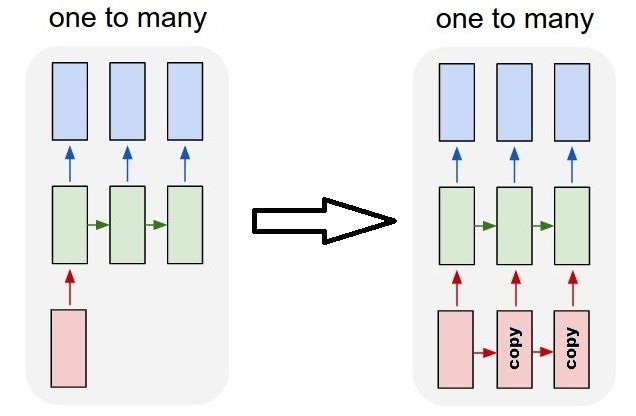
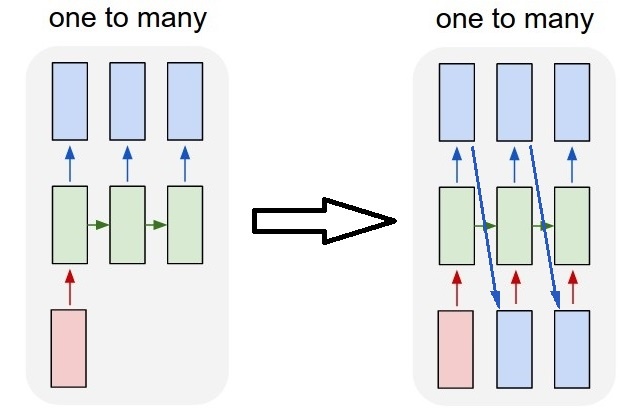
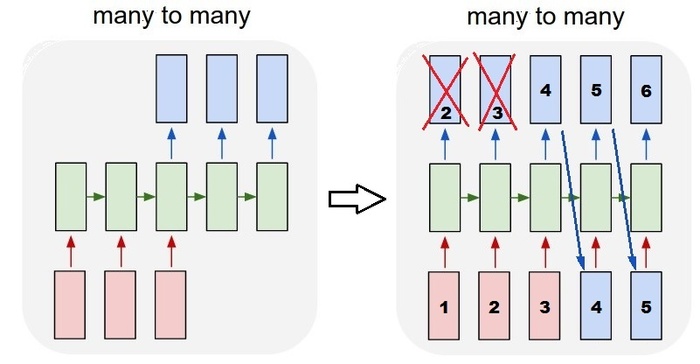

 微信扫一扫
微信扫一扫  支付宝扫一扫
支付宝扫一扫 